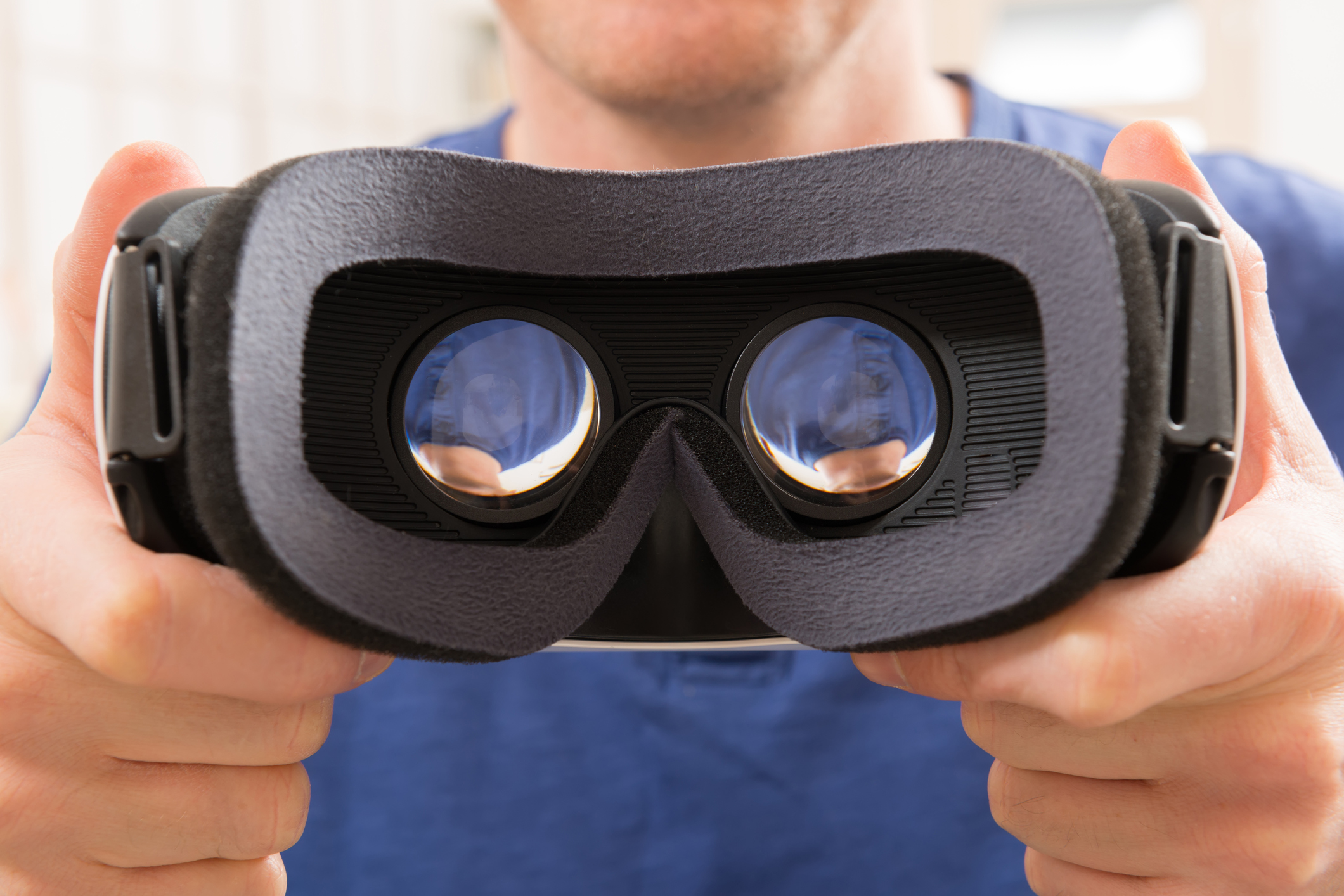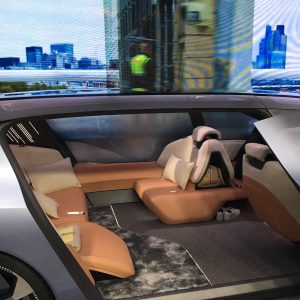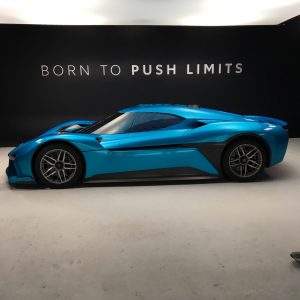Editor’s Note: As a general version of our actionable intelligence products, this version only includes generic suggestions for brands. For industry-specific versions, please contact our Client Services Director Samantha Holland ([email protected]).
- New use cases for conversational UIs broaden the design of brand experiences
- Artificial intelligence in training for the spotlight and may guide behavioral changes
- New VR and AR demos heralds the next level of immersive and reality-bending experiences
- A display of global culture and communities reflect the open nature of new media channels
Last Friday, the Lab team descended upon Austin, Texas to attend the annual South by Southwest (SXSW) Interactive festival. Over the course of five days, we met with clients and promising startups, chatted with industry insiders and thought leaders, and checked out some innovative exhibitions that companies set up all over town. This year’s SXSW may not have a breakout new trend or app, as Twitter once was in 2007 and Meerkat in 2015, nevertheless, it underscored some of the ongoing trends in consumer technology and marketing with a few new spins that all brands need to look out for.
Conversational Interfaces Test New Narratives
Led by the explosion of interest in voice-based digital assistants, conversational interfaces are having a moment, underscored by Alexa’s take over of this year’s CES. SXSW was no different, as many exhibitors, such as meal replacement maker Soylent and China’s Mobvoi proudly showed off their latest conversational products and integrations. However, we also saw some new products that have the potential to expand the design and narratives of conversational experiences.
For example, Capital One, a “super sponsor” of the festival, brought their newly launched SMS bot Eno to SXSW to showcase the future of conversational banking. Capable of natural language processing, the Eno bot can help customers handle basic tasks such as checking for balances or making payments via text. It can even understand emojis and allow you to send a “thumb up” or “smiley face” as confirmations. Eno is also notably designed to be gender-neutral, bucking the ongoing trend of predominantly female personas among popular digital assistants. When asked if it is a boy or a girl, the bot will wryly reply that it is “binary.”
More innovatively, perhaps, startup Novel Effects brought a new idea to voice-based conversational products, as the founders demonstrated at the SXSW Accelerator pitch event. Instead of making a device that simply reads the bedtime stories for your kids, its product aims to enhance your own story-telling, using voice recognition to listen for certain keywords in the pre-vetted kid’s books and play sound effects and musical cues at the right moments. The experience that Novel Effects envisions is less about back-and-forth conversations, but rather using natural language processing to support storytelling, amplifying the message with environmental and contextual audio cues.
Training AI & Using It To Guide Behaviors
No tech or marketing event in 2017 would be without the buzz surrounding artificial intelligence, and SXSW was no exception. Behind the intensive discussions on its potential applications and ethical issues, the core message is clear – we are on the verge of another industrial revolution led by the deployment of AI-powered robots and services, and everyone, from brands to agencies to media owners, needs to get ready for it. Personal data abound thanks to the increasing adoption of wearables and other connected devices, and by plugging them into AI engines for insights and recommendations, brands may be able to unlock the abilities to guide behavioral changes.
Various keynote presentations and panels this year are AI-themed, including “AI: How Tech’s Next Revolution Will Change Lives” where Diane Bryant, executive vice president of Intel’s Data Center Group, shared her vision for AI innovations, and “Using AI & Machine Learning to Extend the Disney Magic,” where a panel of Disney executives talked about how to apply AI and machine learning tools to storytelling and animations.
In terms of exhibitors, IBM had a big showing by renting out the entire Brazos Hall for four days to demonstrate the various use cases of its cognitive computing service Watson. Guests at the “Makers’ Garage” could use Watson’s cognitive capabilities to design a T-shirt, remix a song, or even create a bot. One particularly interesting activation used Watson to recommend beers based on that participant’s answers to four generic questions that help to discern individual tastes and preferences. Participants were then encouraged to taste the three choices that Watson presents and offer feedback on whether Watson chose the right beers. The goal, IBM says, is to train AI to ask the right questions and improve the accuracy of its recommendations.
Beyond using the SXSW crowd for AI training and educating the event-goers about the revolutionary potential of AI, we also saw an exciting implication that AI could bring to marketing. Bento is a connected device maker that makes sleep monitors for babies and parents, which come with a built-in algorithm that can recommend the optimal nap and sleep time for babies based on their sleep patterns so that the parents can get some rests as well. The potential of the increasing amount of personal data has quantified our sense of “selfhood”, and AI solutions will help people make sense of that data, extract actionable insights, and help guide them to form new habits and make better choices.
Setting The Next Stage For VR & AR
Virtual reality and augmented reality are prominently featured at this year’s festivals as expected. Though nothing groundbreaking was announced, the immersive activations nevertheless demonstrated the advances VR and AR technologies has made in setting the stage for a more socially connected and interactive user experience.
Sony’s Future Lab division demonstrated a multi-person VR game of tag called Superception that allows up to four players to share their perspectives with each other in real time. Built with a network of interconnected VR headsets, the game is to figure out where the other players may be by analyzing all four perspectives.
Viacom’s R&D unit Viacom Next debuted “The Melody of Dust,” a VR experience that is in equal parts VR gaming and interactive composition. Working with the sounds provided by electronica musician Hot Sugar, participants are encouraged to generate their own version of the music video by interacting with different objects in this room-scale VR experience.
On the AR side, advances in facial recognition and tracking have enabled more precise augmented experiences. Philm applies artistically rendered live filters to your photos and videos, whereas AR startup YouCam worked with e.l.f. cosmetics to create a smart mirror that can apply virtual makeup to your face and let you switch between different looks. AR headset maker Meta brought its latest hardware Meta 2 to SXSW, which is positioned as a cheaper yet equally powerful alternative to Microsoft’s HoloLens.
Sony showcased an impressive AR installation with an update of its projector-based touchscreen technology. By combining it with unique user interface design, the new set-up allows users to control holographic objects with their hand gestures. While this may not be ready for the consumer market any time soon, it nevertheless points to a future where mixed reality technology blurs the line between the physical and the digital without the need for a headset or a screen.
Global Culture On DIsplay
SXSW may bear the name of a regional event, but make no mistake, this event is nothing but a globally inclusive display of culture and technological advances. There were more than a dozen of panels and events that showcased the global point of view on tech and creativity.
At the New Dutch Wave house, Dutch media company Talpa reflected on the success and learnings from building The Voice from one hit reality show in Holland into a global phenomenon. By working with local production companies that licensed the show’s format, Talpa was able to tweak the show to fit with the regional realities while maintaining its core elements that transcends cultural differences. The public voting system, for example, has to be altered at times due to smartphone adoption rate in certain global markets, but the chair-turning blind auditions stay consistently the same.
The open nature of the internet has made it possible for content platforms to reach customers across national borders, and the proliferation of smartphones has granted internet access for more customers than broadband ever did. These new digital mega channels, many of which were present at SXSW such as Twitch or Spotify, reflect an increasingly globally homogenizing consumer culture and interconnected communities.
What Brands Need To Do
For brands, the main challenge prompted by the ongoing trends which SXSW underscored comes down to two big questions: how are you designing the user experience, and how do you make use of the customer data?
Whether it’s conversational interfaces or immersive interfaces powered by VR/AR technology, brands have new ways to design their user experiences. The rise of voice-activated home assistants has opened up a new channel for brands to design audio-based experiences to reach customers, and offer a hands-free user experience that is preferable in certain contexts such as driving or cooking.
The new activations and demos from SXSW point to a bright future where VR and AR technology are interactive enough to allow customizable content that offers customers options and social enough to allow the immersive experience to be scalable. As the hardware continues to develop, VR content is quickly emerging as a medium that brand marketers should explore to attract consumer attention with innovative storytelling, whereas AR is positioned to have even bigger implications for marketers by blending digital elements into the physical world.
Besides the obvious opportunities, brands should also consider building audio-based and immersive experiences to augment and support existing marketing efforts. For example, an auto brand may consider developing a voice-based digital assistant for dealerships that can chime in to provide statistics and funny one-liners to support the sales pitch. A retailer, on the other hand, may find it useful to develop a seasonal interactive VR experience to help draw people into stores during holiday sales events.
Beyond designing new user experiences, brands also need to learn to leverage the power of AI to harvest the huge potentials hidden in their customer data. Many companies have launched branded chatbots to reach customers on messaging apps, and they will only get smarter and more helpful as AI technology advances. But few has yet to plug AI into their CRM systems and marketing creatives to deliver personalized user experiences that enhance your brand messages, as well as data-driven, dynamic recommendations that can help modify customer behaviors.
AI is a key driver in the development of autonomous vehicles. But beyond that impending auto revolution, AI can be used to analyze purchase patterns and market trends so as to help brands across industries identify the key moments in consumer journey and reach them with personalized messages. If your brand has yet to consider the potential of AI solutions in transforming your business and marketing practices, now would be the time to start.
How We Can Help
While some of the trends we dived into here are still in early stages of development, areas such as conversation interfaces and VR content are ripe for in-market brand activations. If you’re not sure where to start, the Lab is at your service.
We have extensive experience in building Alexa Skills and AI-powered chatbots to reach consumers on conversational interfaces. The “Miller Time” Alexa Skill we developed with Drizly for Miller Lite is a good example of our expertise. We developed Dialogue, a dedicated conversational practice backed by our stack of best-in-class technology partners and an insights engine that can help you build the optimal conversational experience and extract business intelligence from conversational data.
As for VR, our dedicated team of experts is here to guide marketers through the distribution landscape. We work closely with brands to develop sustainable VR content strategies to promote branded VR and 360 video content across various apps and platforms. With our proprietary technology stack powered by a combination of best-in-class VR partners, we offer customized solutions for distributing and measuring branded VR content that truly enhance brand messaging and contribute to the campaign objectives.
Additionally, if you want to learn more about how to employ AI beyond conversational interfaces and how to effectively reach a global audience via new online channels, we have more strategic insights on these topics that we are happy to share and customize for your brand as well.
If you’d like to know how the Lab can help your brand figure out how to tap into these tech trends manifested at SXSW to supercharge your brand with digital solutions, please contact our Client Services Director Samantha Holland ([email protected]) to schedule a visit to the Lab.







